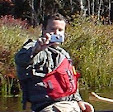 |
| Stokers on the Scantic |
My whitewater season started in January, and I got out on some old favorites and some new runs including the Salmon River (1) (2), Sugar/Croyden Brook, Scantic, White, Pemi – Woodstock, Deerfield - Fife Brook, Farmington – Tville (1) (2) (3), the West and the Pcat. Unfortunately, I missed a lot of trips in April dues to family obligations.
 |
| Point Judith Pond |
I went to Blackstone Valley Paddle Club trips at Pawtuxet - Hope and the Blackstone - Manville Dam. I led flatwater trips at Pawcatuck – Bradford to Potter Hill, Providence and Point Judith Pond.
 |
| RICKA Picnic in Wickford |
Here are some of my more significant trips:
- January - Blackstone Manville Dam, Salmon River (1) (2)
- February - Hunt River, Blackstone - Plummers Landing, Blackstone - Martin Street Bridge
- March - Quinebaug – Danielson to Plainville, Sugar/Croyden Brook, Really Upper Millers, Scantic
- April - White
- May - Blackstone - River Bend Farm, Pemi – Woodstock, Pawtuxet - Hope, Quinebaug – Danielson to Plainville
- June - Blackstone - River Island Park, Blackstone - Manville Dam (1) (2), Deerfield - Fife Brook,
- Farmington – Tville, Blackstone – Central Falls Landing, Pawcatuck – Bradford to Potter Hill
- July - Providence, Meeting on the Water - Fort Wetherill, Point Judith Pond Rocks and Rescues – Fort Wetherill
- August - Level 3 Step-up - URI Bay Campus, Slocum’s River, Bristol Ferry, Rocks and Rescues – Fort Wetherill
- September - Pawcatuck - Potter Hill to Westerly, Lincoln Woods, Nashua – Peperrell to Nashua, Incident Management – Fort Wetherill, West River, Wickford Harbor
- October - Blackstone Gorge
- November - Pcat Drawdown, Wallum Lake, River Bend Farm, Tville
- December - Nashua - Leominster to Lancaster, Year-End Camping at Burlingame
I paddled almost every day of my summer vacation on Great Island including the RICKA Meeting on the Water and Point Judith Pond.
 |
| Hiking at Gardner Hill |
In terms of resolutions for 2024, I did OK on some, but not on others. I did get out in my sea kayak in rough water conditions, and I did quite a bit of whitewater paddling. Unfortunately, I didn’t do much camping, I didn’t get back to the Dead, and I didn’t practice rolling.
 |
| Bastille Day Camping |
- Keep practicing with my new sea kayak – I need to get out on more level 3 trips.
- Do more camping – I’d like to get back to the Allagash, or maybe the St. Croix or the Bonaventure, or the Maine Island Trail in my kayak.
- Keep paddling whitewater - as long as my knee holds up.
- Get back to the Dead – always a great trip.
- Practice rolling – I’ll keep including it until I do it – maybe in the sea kayak.













































